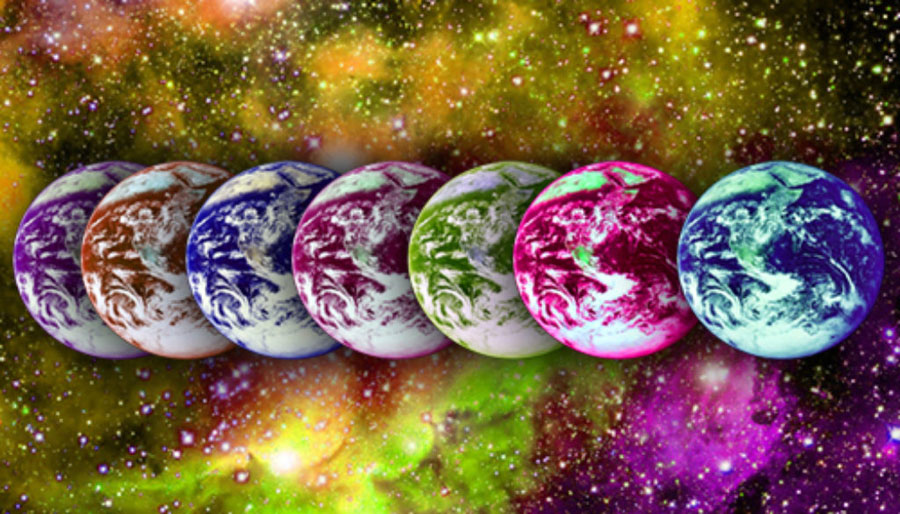When we say some element of the quantum world occupies many states at once, what’s really being referred to is the element’s wave function. A wave function can be viewed as a space occupied simultaneously by many different possibilities or degrees of freedom.
If a particle could be in position (x,y,z) in three-dimensional space, there are probabilities that it could specifically be at (x1,y1,z1) or (x2,y2,z2) and so forth, and this is represented in the wave function, which is all of these possibilities added together. Even what we’d normally (deterministically) consider empty space has a wave function and, as such, contains very real possibilities of not being empty. Sometimes this manifests as real “virtual” particles.
Visually, we might imagine a particle in its undisturbed state looking more like a cloud than a point in space. Imagine tracing out all of your movements for a couple of weeks or months on a map or satellite image. It might look a bit like that cloud, only instead of describing past events, the electron cloud would describe precisely right now. Weird, eh? What makes it even cooler is that a bunch of particles can share these states at the same time, effectively becoming instances of the same particle. And so: entanglement. (more…)



 ‘Parallel universes DO exist’: Multiple versions of us are living in alternate worlds that interact with each other, theory claims!
‘Parallel universes DO exist’: Multiple versions of us are living in alternate worlds that interact with each other, theory claims!

